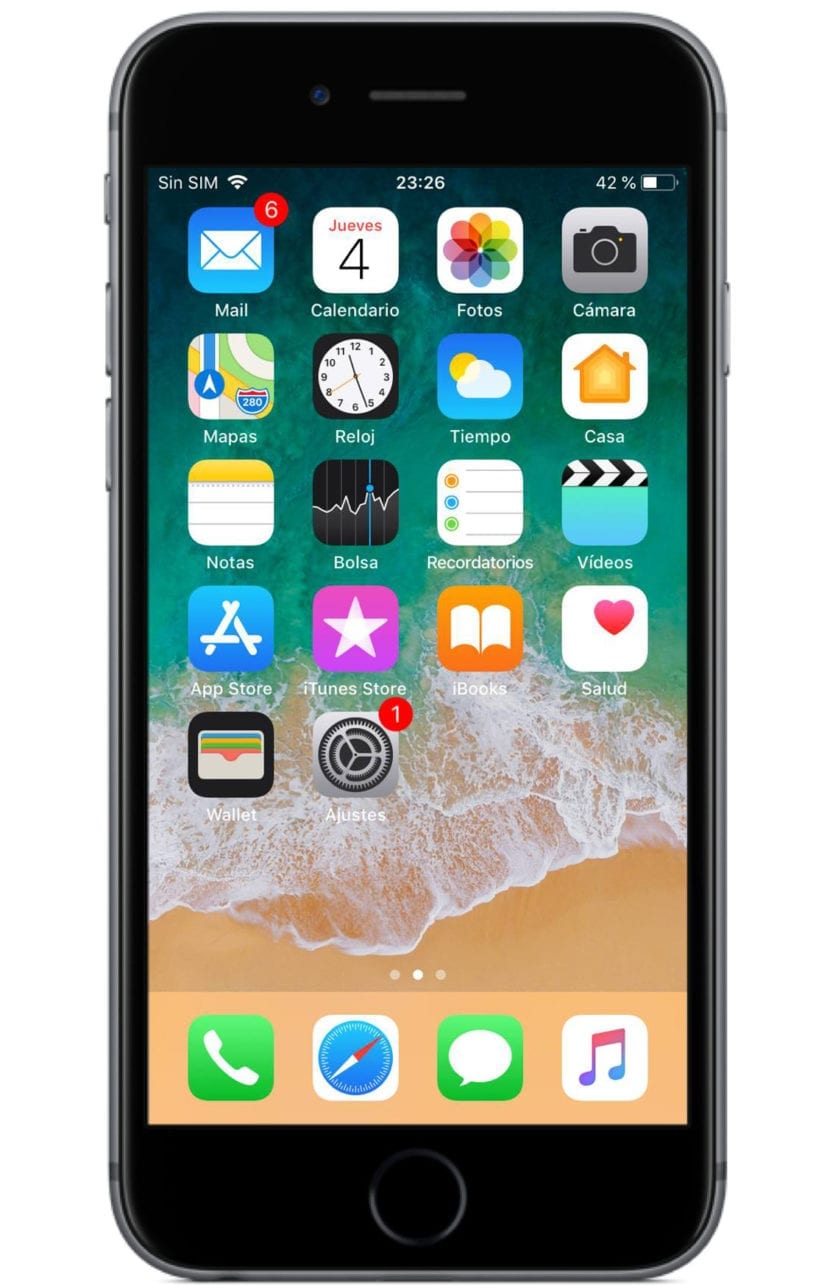
Since the launch of the iPhone 7 two years ago, Apple (finally) ended the mania of establishing the base capacity of its devices at 16 Gb to double it to 32 Gb. And yet for many people, those 32 Gigabytes can be made short if you use the iPhone to view and store multimedia content. Without going any further, a server is considering renewing its iPhone to another exactly the same, but with 128 Gb of storage instead of the current 32.
Although it is true that nowadays with the large number of streaming services and cloud storage we keep less and less data on our devices. But the problem is that this data is getting bigger and bigger every day. So, if you are like me and you run short of storage on your iPhone, you can follow this simple tutorial where we tell you not one or two, but six ways to free up space on your iPhone. What are you waiting to follow the steps?
The simplest: delete applications from your iPhone
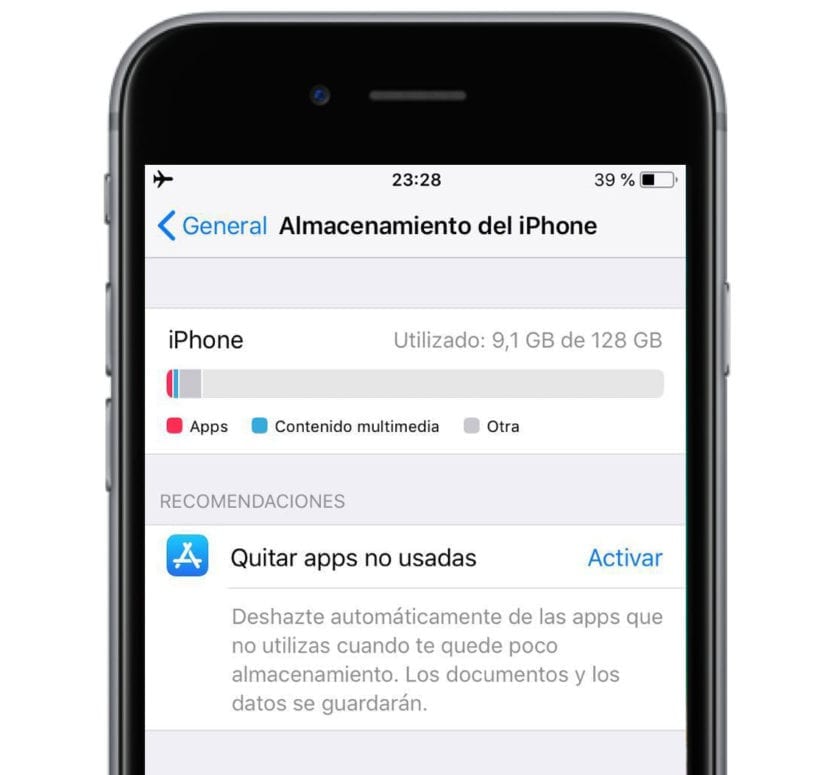
This is undoubtedly the easiest way to free up space on our iPhone. We all start by reviewing which apps we do not use to eliminate them and scratch some Megabytes of space. Because yes, it is normal that we have applications downloaded a long time ago and forgotten on our device, having been used only once.
So if you want to free up some space, you can start with delete some of those forgotten apps. Remember that to delete an application from the home screen, you must press on its icon and wait for vibrates said icon. This means that we are in the edit mode of the home screen. Following, we have to press on the 'X' from the upper left corner of the icon to delete the application from our iPhone.
What applications take up the most space?
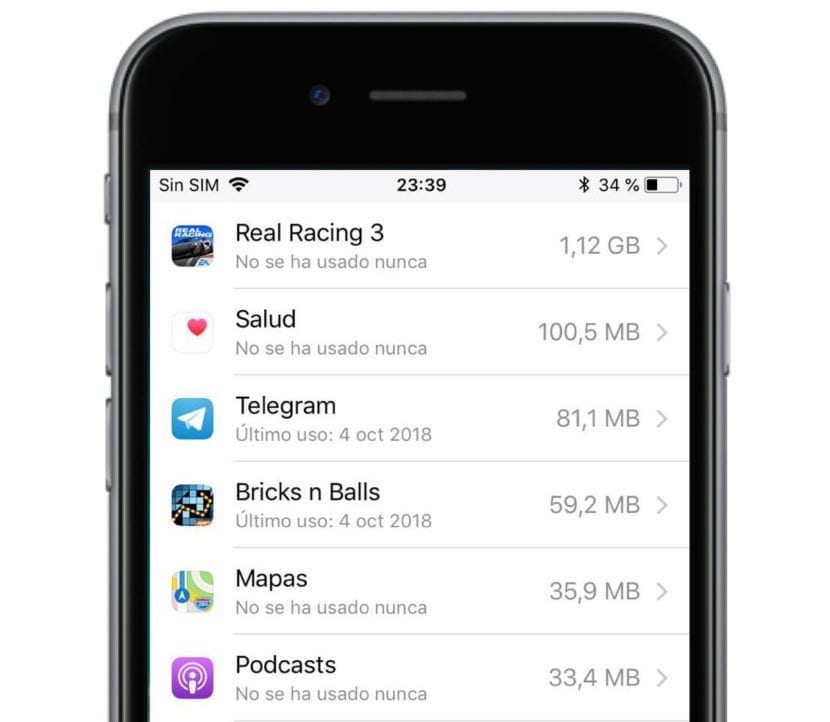
If we access the menu 'Settings> General> iPhone Storage', we will find, in addition to a breakdown of the storage that each type of file occupies, the applications that we have installed in order of occupied memory. That is, the ones that occupy the most will be located at the top. Probably the photo app and music app (such as Spotify or Music itself) whatever more space take up, since the figure also includes the multimedia files of the app, as we will see below.
Our advice is that, If we have an application that we use rarely and it occupies more than 200 Mb, it is best to delete it. We can always download it again and recover the data if we choose to do so when deleting it. As you can see, iOS shows when was the last time each app was opened, so this will help us find applications that may be worth removing. As a trick, from this list you can delete apps individually, sliding from right to left, as is done in many apps, and pressing «delete».
Data stored in applications
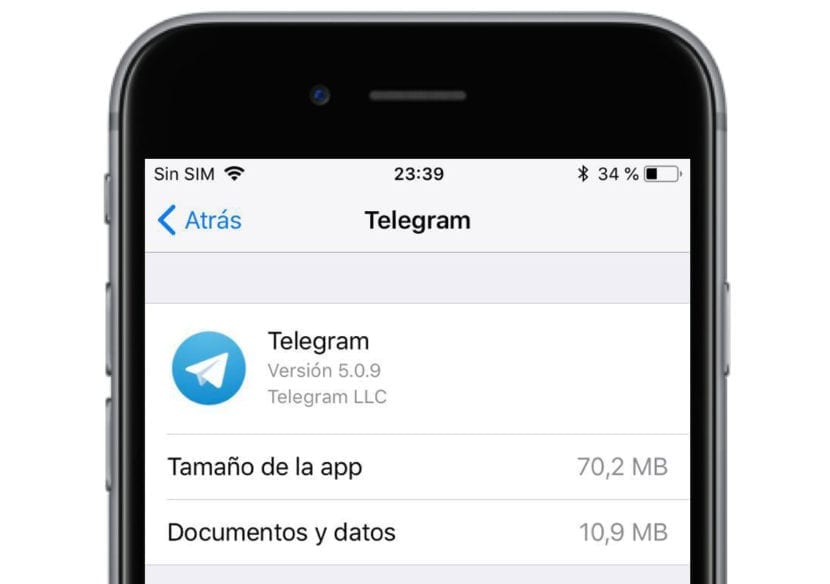
We have to remember and take into account that an app not only occupies its space itself, but also they also take up space storage the data that it contains. And how can we know? Very easy, in the menu 'Settings> General> iPhone Storage' and accessing each application listed, we have broken down the information we want: how much the app occupies and how much its data.
In the above example we can see that Telegram occupies us a little more than 70 Mb, and yet, the documents and data are barely 10 Mb. This corresponds to the Downloaded messages, images, videos, voice memos, and downloaded documents. With such a small quantity it is not worth eliminating them, however we can store several hundred Mb in downloaded files. In this case, it would be interesting select what we want to keep and what we can delete.
Eliminate extra apps
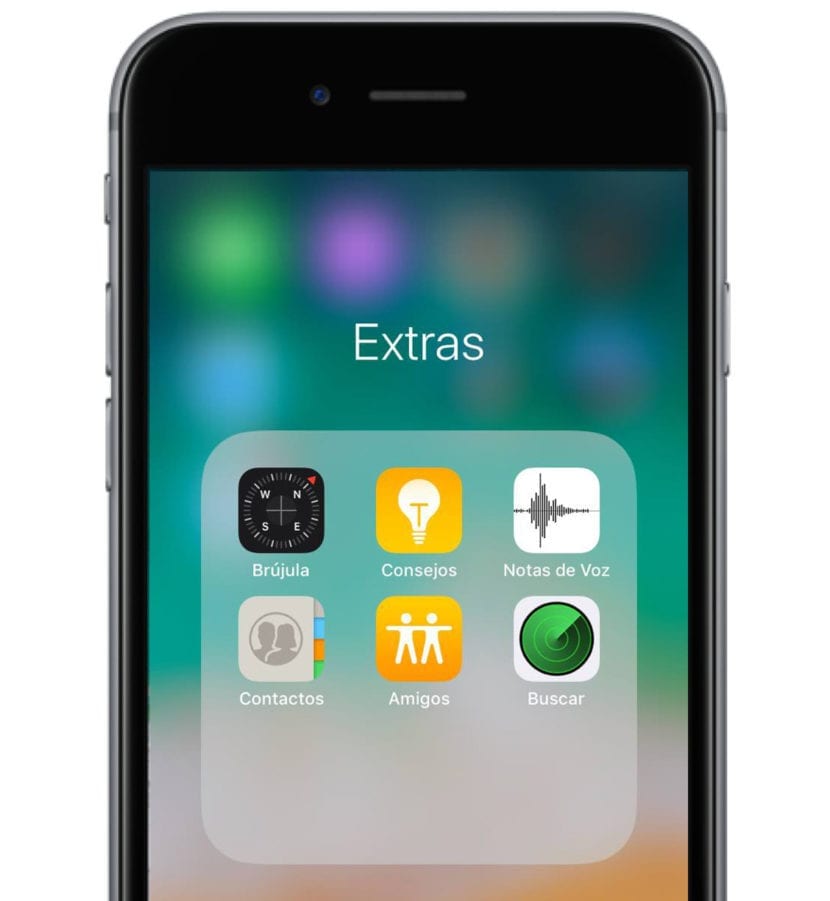
«Why do I want the application of Stock Exchange if I have never opened it? Is it necessary to have the app Tips taking up memory on my iPhone? Can't I get them out of the way?»The answer is easy: yes. The system apps, that is, those that come pre-installed with our iPhone (such as Stock Market, Game Center, Notes or Calendar, among others), they can be removed from our device. Although be careful, some applications are not so easy to remove because Apple integrates them into your phone by default.
Since iOS 10 was released it is possible to uninstall them to scratch some storage space on our iPhone. Anyway, you have to keep in mind that with this method you will be hiding the app, deleting only the data from it. We will gain some space, although not as much as with a regular app, since we will continue to have the application itself in our memory. For example, Maps or Weather can be deleted, but Safari, Phone and Messages cannot. The way to do it is identical to any app: hold down, and when it appears, press the "X". To download them again, go to the Stor Apphey look for them. As simple as that.
What if I update the iOS version?
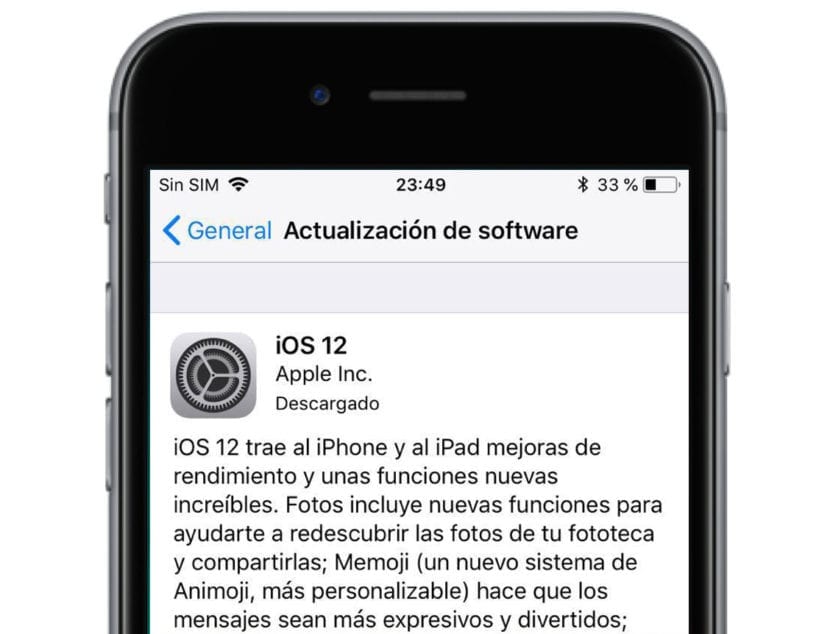
Of course: iOS updates take up your space. Some minor updates only occupy a few hundred Mb, but be careful because version changes bring with them files that exceed a Gigabyte of space. It is very important to check if the iPhone has downloaded the update file by itself and has not installed it. In this case, we may have a precious space occupied by something that we did not even know. Our advice: backup and update. You will have the latest software news, and also, you will free up space in the device memory.
If you are not sure, or are still using an older version of iOS, open 'Settings' and go to 'General> Software update' and follow the update instructions. Remember to always make a backup.
Last option: restore your iPhone
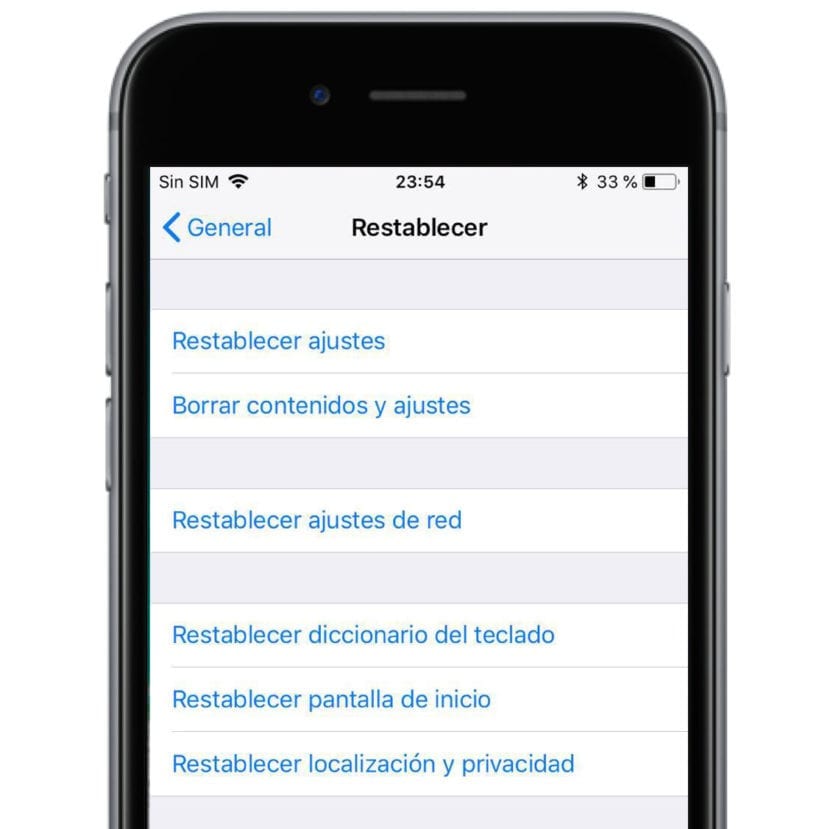
A few days ago we explained to you how to restore your iPhone to leave it as fresh out of the box. And in this case, we can consider factory reset as the last option. The reason is only possible cached files, residual files or data that we do not want to have in our memory, but that we cannot delete since there is no way to access them. It is common for them to accumulate after several system updates made from the iPhone, without formatting, and loading backup.
Make sure that you make a backup of your iPhone first, as we told you in the tutorial. Go to Settings> General> Reset> Delete content and settings to erase all the content and thus free up that space sharply.
As you have seen, there are several ways to free up space on our iPhone. Of course, all these options also apply to the iPadAs any iOS device usually. If you see yourself short of storage space, before making the jump to a device with more memory, try our tricks. You may be surprised.